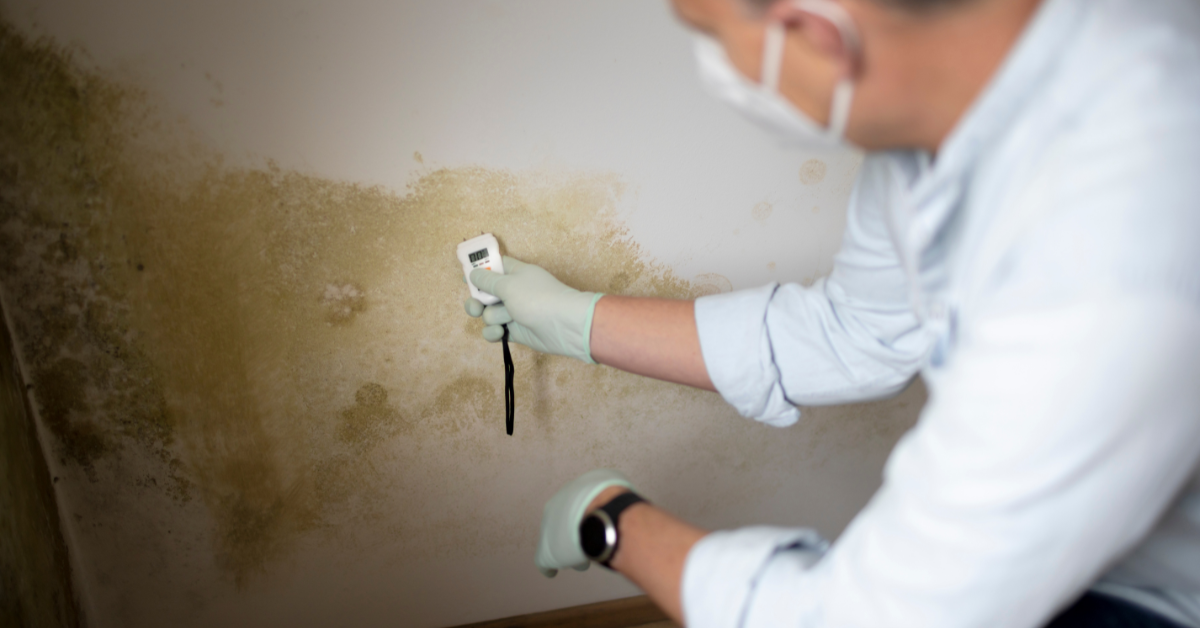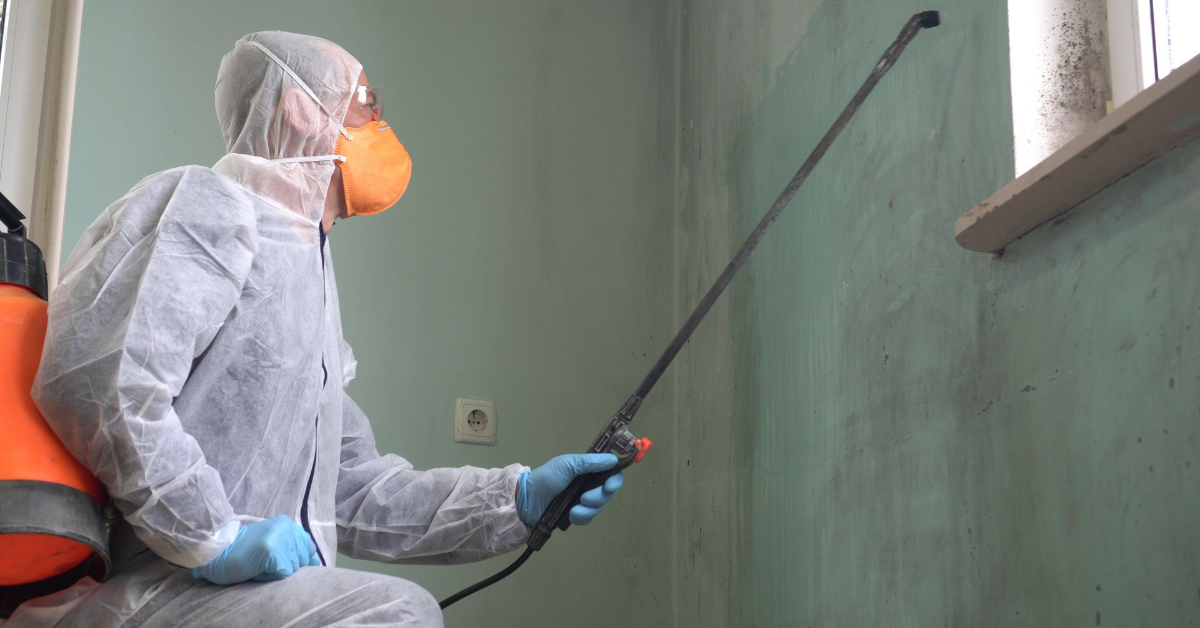
Mold testing and treatment are part of the industry for remediation and environmental cleanup services. In the United States alone, people spend more than $23 billion every year on this industry. This industry employs more than 91,000 people to fill the demand for these services.
So why are so many people interested in testing for mold and eliminating it from their buildings? There is a long list of disadvantages that come with having mold around. That means that there is also a long list of benefits that come with eliminating any mold that you might have in your building.
Read on to learn all about the most important things to understand about why testing for mold at your business is so important!
How Often is Mold Found to be a Problem in a Building
The most common complaint we receive regarding indoor air quality (IAQ) is mold. It is rarely the real problem, perhaps as little as 5% to 10% of the time.
Because mold is in the news a lot (and because it is often very hard to see), if people feel poorly at their job, it is generally the first thing they find or think about to elicit a complaint. Any IAQ complaint should be taken seriously and investigated ASAP as the longer a complaint goes unanswered the more the issue festers.
We typically see three levels of emotion involved in IAQ complaints and they are:
- Workers ask questions about their indoor environment. They may discuss it with other workers and/or management but the more their questions are not addressed, the more concerned they become.
- Asking questions turns into questioning. If their questions are not addressed, there must be a reason and therefore maybe there is something wrong with the air quality and they start to talk more about it among themselves and it becomes more of an emotional issue, especially if someone has real or obvious symptoms or word from a physician that there may be a problem at the workplace.
- The last step in the cycle is frustration and maybe even anger. This is the point where the employees are looking for proof that their environment is safe and until they see it for themselves it will remain a problem. Workers are or can be distracted, spend a significant amount of time and energy worrying about the work environment, and become less productive and it can affect the entire workforce. At this point, it also gets really expensive to address the problem compared to what it would have cost to engage in addressing the problem much earlier in the process.
How to Test for Mold
Knowing how to test for mold that will provide meaningful results is essential. Some testing and identification methods are more valuable than others. Proper testing for mold will also help you understand which kinds of mold you have and whether you have normally occurring or good mold or bad or harmful mold.
Professionals may use an air quality test for mold to help them find out if you have any mold in your building, and if so, how much you have. They may also use surface testing by taking samples from surfaces around your building.
The result is that you know if you have mold, how much you have, and what kind you have. Professional testing can even mean that you understand where the mold may have come from and if you may have moisture issues in your building.
Testing for Mold to Determine if What You Find is Problematic
The most serious part of having harmful or elevated levels of mold in your building is that it can cause adverse health effects, especially in occupants that have allergies or pre-existing respiratory issues.
The fact of the matter is that each person will have a different reaction to mold toxicity: some experience constant symptoms like headaches, difficulty breathing, and even fatigue. Depending on the symptoms being experienced by certain employees, identifying mold as the cause can be tricky if it is actually the culprit.
More common signs or symptoms of an allergic reaction to mold:
- Sneezing.
- Runny or stuffy nose.
- Cough and postnasal drip.
- Itchy eyes, nose, and throat.
- Watery eyes.
- Dry, scaly skin.
Most of these problems can be chronic. However, mold can also lead to acute infections that make people temporarily sick.
If people spend a lot of time around the mold, they may develop allergies. Children are especially likely to develop allergies if they are exposed to mold for significant periods. They can also develop asthma because of mold.
Of course, anybody with a mold allergy or asthma will be especially susceptible to any mold that you may or may not have in the building.
Test for Mold in Walls to Discover Water Damage
Along with organic material to feed on, mold needs a reliable source of moisture. That means that if you want to find mold, you should often start by looking in any place that you know is especially humid or where water damage may have occurred.
Leaking roofs and pipes and poor drainage are all potential sources of moisture as are below-grade entrances to buildings and poor walkway and entrance drainage. An often overlooked source of moisture is condensation.
Cold air ducts and water pipes can facilitate moist air condensing on them which can lead to puddling on top of ceilings that never dry out. This can help create the ideal environment for mold growth.
But what if you don’t know where all of the humid parts of your building are?
Discovering where your mold is can also help reveal where you might have chronic moisture. Use of a moisture meter to test building products and materials or more importantly, using a thermal imaging camera can help detect hot spots behind walls where mold may be growing.
In almost every situation where there is mold growth in a building, the source of moisture must be identified and removed or mitigated to prevent the future growth of mold.
 Improve the Value of Your Building With Mold Treatment
Improve the Value of Your Building With Mold Treatment
It should come as no surprise that a building with mold is worth significantly less than a building without mold. That is one important reason that it is a good idea to catch mold as soon as you can. That way, the impact on the value of the building will be smaller.
Mold Testing Can Save You Money in the Long Run
Baseline or routine IAQ testing can identify problems before they become just that—PROBLEMS! There is a battery of things that can be measured, including mold, to suggest that the air quality of your workplace is healthy.
The levels of Carbon Dioxide that we all exhale are an excellent indicator of fresh air introduction into space. We find levels of 700 parts per million (PPM) are common in buildings where employees complain about air quality. Outdoor levels are generally about 400 ppm and some guidelines suggest that 1,000 ppm is an indicator of good air exchange.
Organic vapors, formaldehyde, temperature, relative humidity, carbon monoxide, and more esoteric contaminants such as off-gassing from 3D printers and high-speed copy machines, cleaning chemicals, janitorial supplies, and construction and renovation products are all potential sources of complaints, and monitoring these things on an initial and regular basis can mitigate problems before they even begin!
Learn About How to Prevent Potential Future Mold
Along with testing for mold, professionals can help you better understand how to prevent mold in the future. In addition to giving you general advice, they can give you specific advice related to the idiosyncrasies of your building.
Most of the ideas involve better filtration on air handling systems, moisture control procedures, and better observations of suspected issues ahead of time. This is not to be confused with one client that had their maintenance crew routinely replace water-stained ceiling tiles so that employees would not see the stains and complain about mold!
If you are already struggling to contain mold, then learning a little bit more about how to do so more efficiently can save you time and money in the long run.
The Effects of Seasonality on Mold
Mold problems tend to worsen during the warmer, more humid, months of the year. That can make mold testing especially important in the spring or summer. If you test for mold during the winter or late fall, you might not find anything, only to find that mold shows up once the weather turns warm again.
During these warmer months, there will be lots of mold outside as well as inside. This is one reason that many people have allergy problems during these months. If your building has mold, then people who are already having an allergic reaction to mold outside might have an even more intense reaction inside your building.
Our general rule of thumb is that when testing the air for mold, collect samples both indoors and outdoors, and the levels inside the building, in a properly filtered ventilation system, should be about 10% of what is found outside the building (if the filters are doing their job).
In addition, the fingerprint of species found outside and inside should be the same, i.e., indoor and outdoor species should match. If they do not, and you have species indoors that you do not have outdoors, investigating a bit further may be to determine if there has been a water event that has caused mold growth indoors and if mold mitigation should be considered.
 Understand the Importance of Testing for Mold
Understand the Importance of Testing for Mold
We hope learning about the benefits of testing for mold has been helpful for you.
Many people do not realize how much eliminating mold from their place of business can benefit them. Sometimes, long-standing problems can be quickly resolved with the right combination of testing for and treating mold.
To learn more about the benefits of testing for mold or to speak with experts who can help you keep your building mold-free, reach out and get in touch with us here any time!







